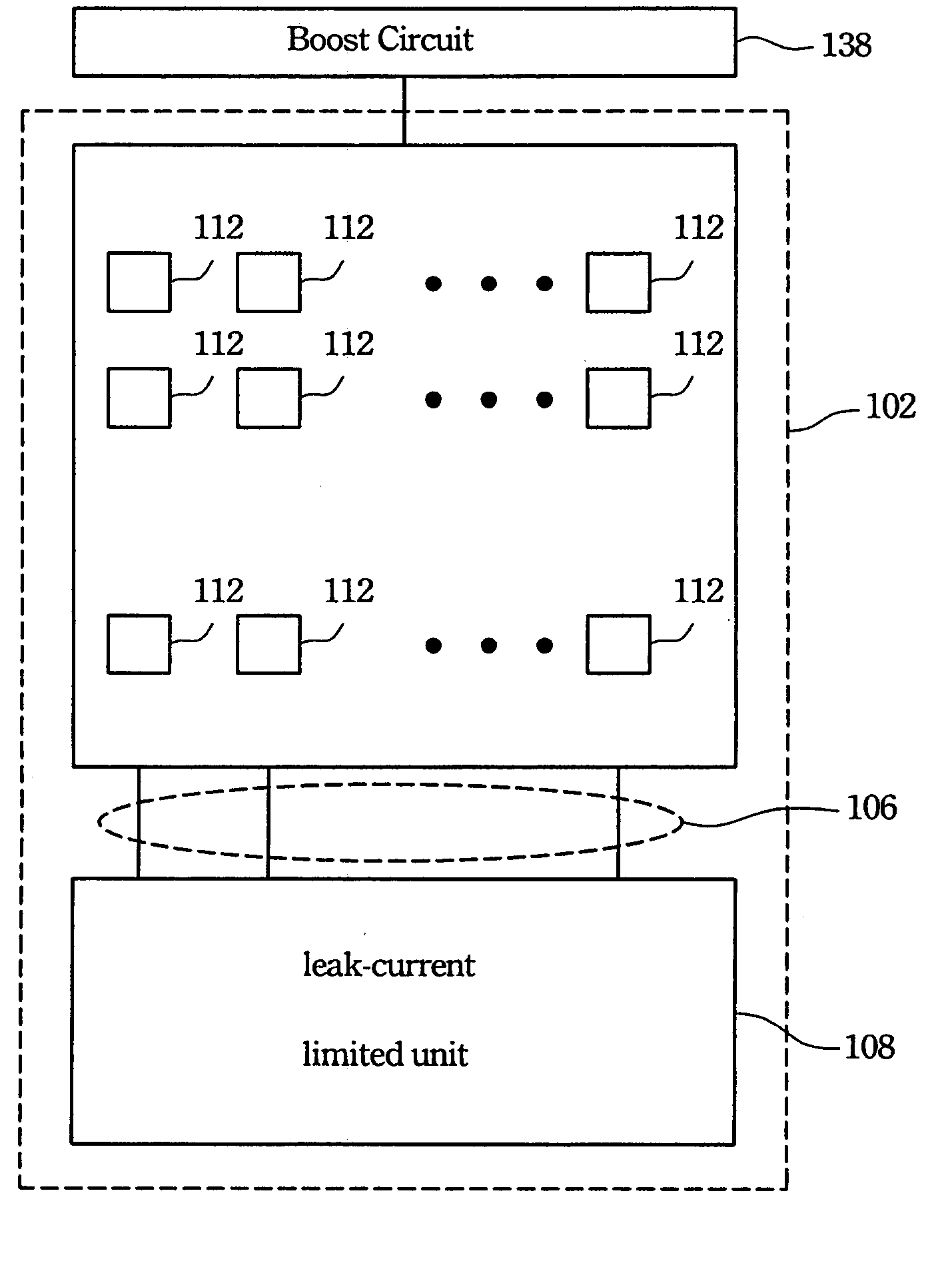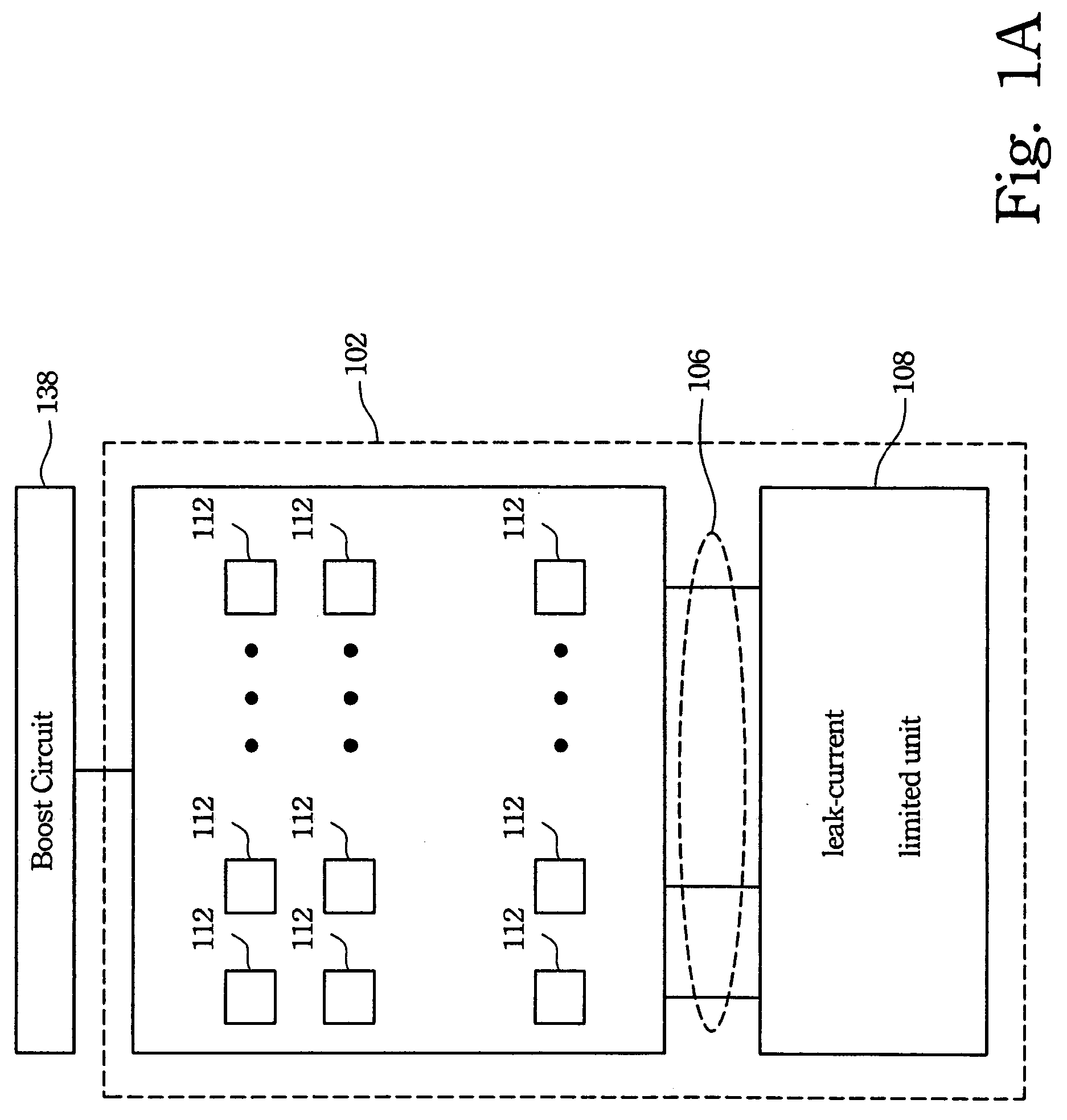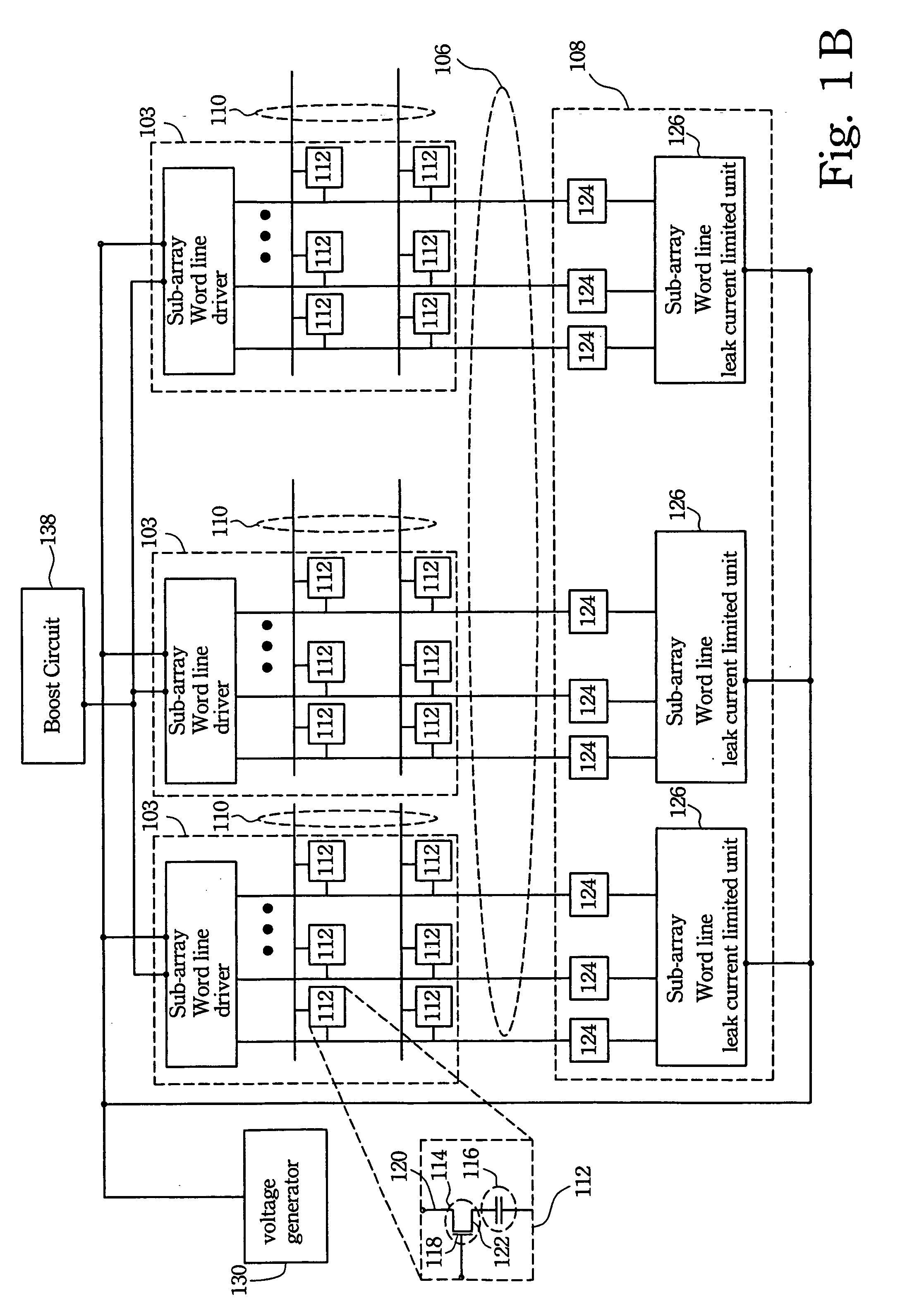Memory device and method for burn-in test
a memory device and burn-in test technology, applied in semiconductor devices, digital storage, instruments, etc., can solve the problems of low stress efficiency, defective devices, and inability to repair with laser and re-assemble, so as to reduce burn-in test time and increase burn-in test efficiency
- Summary
- Abstract
- Description
- Claims
- Application Information
AI Technical Summary
Benefits of technology
Problems solved by technology
Method used
Image
Examples
Embodiment Construction
[0043] Reference will now be made in detail to the present preferred embodiments of the invention, examples of which are illustrated in the accompanying drawings. Wherever possible, the same reference numbers are used in the drawings and the description to refer to the same or like parts.
[0044]FIG. 1A is a block diagram illustrating the preferred embodiment of the invention. FIG. 1B is a block diagram illustrating the detail structure of the preferred embodiment of the invention. With reference to FIG. 1A and FIG. 1B, the memory device 102 includes an array of memory cells 112, a plurality of word lines 106, a plurality of bit lines 110, and a leak-current limited unit 108.
[0045] Each word line 106 is connected to a column of the array of memory cells 112. Each bit line 110 is connected to a row of the array of memory cells 112. The leak-current limited unit 108 is connected to the memory array 102 via the plurality of word lines 106.
[0046] The memory cell 112 is, for example, a ...
PUM
 Login to View More
Login to View More Abstract
Description
Claims
Application Information
 Login to View More
Login to View More - R&D
- Intellectual Property
- Life Sciences
- Materials
- Tech Scout
- Unparalleled Data Quality
- Higher Quality Content
- 60% Fewer Hallucinations
Browse by: Latest US Patents, China's latest patents, Technical Efficacy Thesaurus, Application Domain, Technology Topic, Popular Technical Reports.
© 2025 PatSnap. All rights reserved.Legal|Privacy policy|Modern Slavery Act Transparency Statement|Sitemap|About US| Contact US: help@patsnap.com



